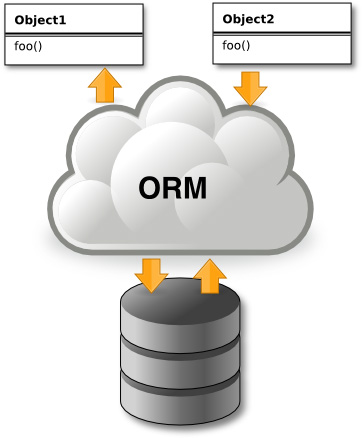CSC/ECE 517 Fall 2009/wiki3 12 sn
Patterns for Mapping Objects to Relational Databases
Introduction
Mapping Objects to Relational Databases is also referred to as Object-relational mapping or ORM. It is a programming technique for converting data between incompatible type systems in relational databases and object-oriented programming languages which creates a virtual object database that can be used from within the programming language [1]. The term "mapping" is used to refer to how objects and their relationships are mapped to the tables and relationships between them in a database [2]. The following figure shows a high-level depiction of ORM:

Fundamentals of Mapping
To understand mapping we must start with the class whose objects need to be mapped. An attribute of such a class will then be mapped to a single or multiple columns of a relational database table. The simplest form of mapping is the mapping of an attribute to a single column and both the entities being mapped have the same data type. For example, a date attribute is mapped to a date type column [2].
References
[1] http://en.wikipedia.org/wiki/Object-relational_database
[2] http://www.agiledata.org/essays/mappingObjects.html
[3] http://www.adobe.com/newsletters/edge/october2008/articles/article2/images/